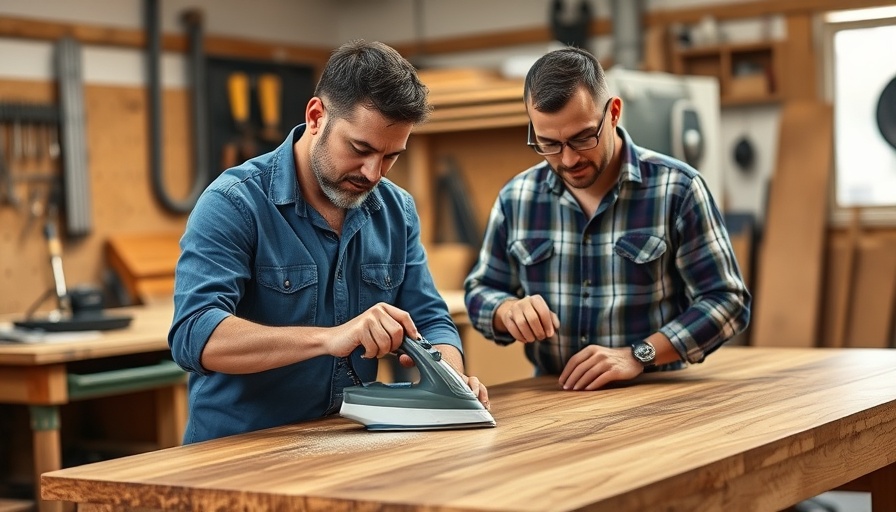
Understanding the Commonality of Wood Stains
Water rings or stains on wooden surfaces are a common issue faced by homeowners. Most of us have unintentionally left a sweating glass or a steaming mug on a table, often leaving behind unsightly marks. These everyday accidents can be incredibly frustrating, especially when they tarnish cherished furniture. Fortunately, these stains are generally treatable, and there's a range of methods you can employ to lessen or remove these pesky blemishes.
In 'How to Remove Ring Stains from Wood | Ask This Old House,' the discussion dives into practical methods for tackling water stains, exploring key insights that sparked deeper analysis on our end.
Simple Solutions: Vinegar and Olive Oil Technique
In a recent video from Ask This Old House, host Tom shared an effective strategy using vinegar and olive oil. While vinegar might seem like an aggressive choice for something as cherished as Grandma's table, it's effective due to its ability to dissolve minerals left by water stains. When applied to the stain, it can minimize the appearance of the marks, making the damage less noticeable. After the vinegar does its job, applying olive oil helps to replenish the wood's finish and blend the area seamlessly.
Baking Soda: An Absorbent Approach
For more stubborn stains, the combination of baking soda and water provides a more aggressive approach. Mixing one part water with two parts baking soda creates a paste, which can be applied directly onto the stain. This method works by using the fine particles of baking soda as a gentle abrasive without damaging the wood underneath. Allow it to sit and absorb the stain, and you'll often see significant improvement.
The Iron Method: Heat to Rescue
If stains persist, a surprising but effective method involves a simple household iron. Cover the stained area with a cotton rag and apply a warm (not hot) iron. This technique is useful because the heat helps to draw out moisture trapped within the wood, potentially returning the surface to a near-perfect state. However, caution is necessary to avoid overheating, which can damage the wood’s finish.
Finishing Touches: Bringing Back the Shine
After employing these methods, you may notice that the wood has dulled in the process. Reinstating the original luster can be accomplished with furniture polish, which not only enhances the appearance but also protects the surface. Regular maintenance with furniture polish can help prevent future stains from taking hold and can keep your wooden surfaces looking their best.
Conclusion: A Little Care Goes a Long Way
Accidental stains on wooden furniture are a reality of homeownership, but being armed with the right tools can make a significant difference. Implementing techniques such as vinegar and olive oil, baking soda, and even heat can mitigate damage from stains effectively. Remember, while total perfection may be elusive without refinishing, these methods can lead to substantial improvements.
 Add Row
Add Row  Add
Add 




Write A Comment